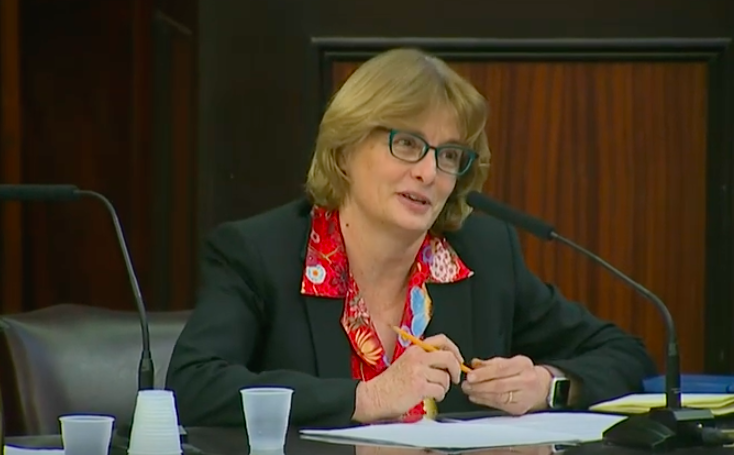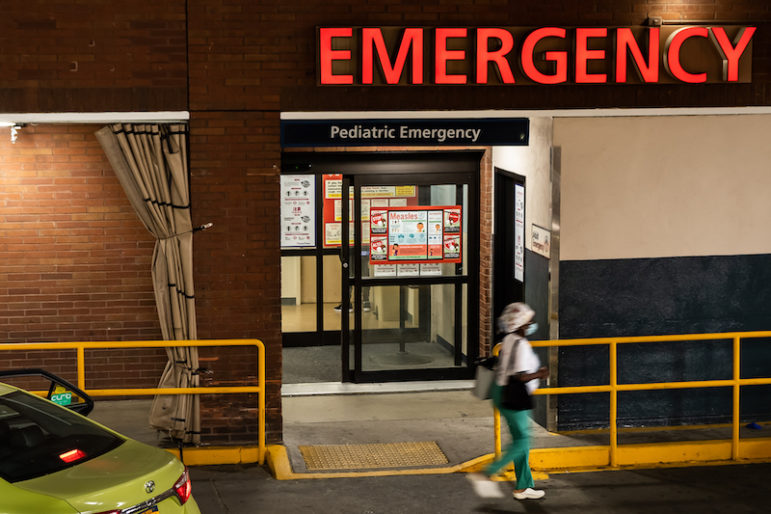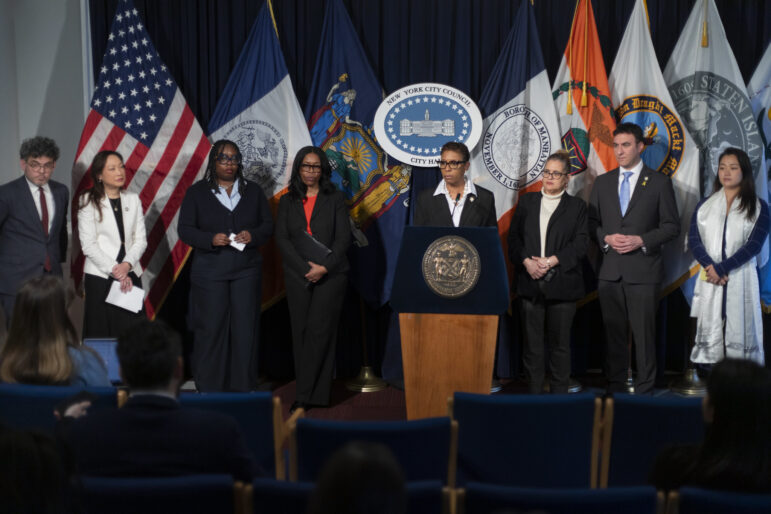
2019 Charter Revision Commission
Vicki Been seen testifying at a Charter Revision Commission hearing last month, before she was named deputy mayor.
Vicki Been, a smart and personable figure on New York’s housing policy stage for many years, is returning to the de Blasio administration as the deputy mayor for housing and economic development, where she’ll oversee public housing, the Economic Development Corporation and the buildout of the 300,000-unit affordable housing plan that she helped to create while serving as commissioner of housing preservation and development from 2014 to 2017.
Been will have plenty on her agenda, with major neighborhood rezonings, infill development at NYCHA, homeless shelter sitings, a coastal defense project for lower Manhattan and four new jails in the pipeline.
And in the background is a bid by community advocates and some planners to change how that work is done: a push to get the 2019 Charter Revision Commission to approve a ballot question that would let city voters decide whether to create a system of comprehensive planning.
That move would require rezonings and other land-use changes to fit within a citywide plan for absorbing population growth, with public investments for schools and transit tied in. Advocates say that approach, which New York has never taken, will allow for more equitable growth that’s better coordinated to meet challenges like climate change.
The new deputy mayor does not share that view. In testimony last month to the Charter Revision Commission, she was withering in her criticism of the push for comprehensive planning.
“Indeed, it’s irresponsible to submit such an ambiguous concept to a vote. It just means that we’ve avoided the tough political choices involved by using ‘weasel words’ – words that sound specific and indisputable, but that are in fact evading a direct and transparent statement or position,” said Been, who was one of several current and former city officials who opposed changing the city’s land-use approach. She added, “[U]nless we have a much more specific proposal, those voters will have no idea what they are voting for, except that comprehensiveness, and planning, sound reasonable – like apple pie and teddy bears.” She said:
Comprehensive planning can mean more or less neighborhood control, depending on how it’s interpreted. It can mean longer land use processes as we debate whether the proposal is consistent with the plan, or it can mean that once a proponent shows that the project is consistent with the plan, the project should be subject to less scrutiny. It can be a ceiling imposing an upper limit on what is developed in a neighborhood, or a floor below which the neighborhood loses control or suffers penalties. It can be a broad vision, or it can be a series of very specific, measurable, accountability-focused, and time-limited goals.
The commission doesn’t have the time, Been insisted, to really vet and explain to the public what comprehensive planning would look like. And she worried that comprehensive planning would either be too vague to be worth the trouble or too rigid to do anything but empower NIMBYers, and thus reduce the changes for “more equitable development for those who have been shut out of many neighborhoods and housing opportunities because of their income, race, or ethnicity.”
But Been’s beef with comprehensive planning seemed more about the philosophy than the particulars: “There is a growing consensus across land use and urban policy experts in academic institutions; public policy think tanks; and federal, state and local governments that land use regulation, including planning is limiting growth in productive cities like New York in ways that have very negative consequences both for those cities and for their states and the nation as a whole,” she said.
Been also argued that the city already does a lot of planning: “Since the Bloomberg Administration released PlanNYC, for example, the city has put out detailed and comprehensive for affordable housing (Housing NY, and Housing NY2.0); for NYCHA (NextGen NYCHA); for homelessness (Turning the Tide on Homelessness); and sustainability (Lower Manhattan Coastal Resiliency (LMCR) project), among other critical issues. The city has pulled much of that together in a plan to become the most resilient, equitable, and sustainable city in the world – OneNYC.”
That’s a different take than Been had nine years ago, when City Limits interviewed her for an issue of our magazine called “City Without a Plan.”
Asked back then about whether PlaNYC was really a “plan,” Been said: “I think it’s been a very important contribution, but I don’t think it’s a substitute for the kind of comprehensive planning that is usually thought of as part of a land use process.” A comprehensive plan, she added, “would normally say, ‘Here are areas that are underdeveloped and could take more growth, and here are areas that are at their max. PlaNYC tells you we want a more sustainable city, a city where everyone is 15 minutes from a park. But it doesn’t tell you, ‘This area needs growth, this area doesn’t need growth.'”
The charter revision commission is also considering a long menu of other changes to land-use procedure, the powers of local officials, the conduct of local elections, how the city does its budget and more.








